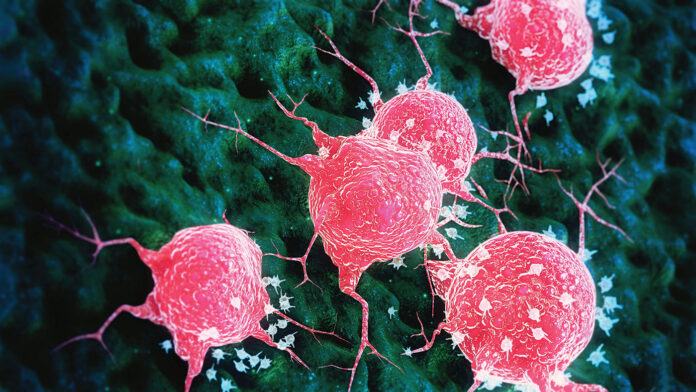
Researchers at the University College London (UCL) have developed a new handheld scanner that generates highly detailed 3D photoacoustic images in just seconds, an advancement that could provide for earlier diagnosis of cancer, cardiovascular disease, and arthritis. The study, published today in Nature Biomedical Engineering, details the technology at the heart of the scanner called photoacoustic tomography (PAT). They show that their new PAT scanner can deliver to clinicians real-time, accurate, and intricate images of blood vessels to aid in the diagnosis in a range of diseases.
PAT imaging is accomplished via laser-generated ultrasound waves that can visualize subtle changes in veins of less than a millimeter and arteries up to 15 millimeters deep in human tissue. Past PAT technologies, however, needed more than five minutes to produce a usable image, but only if a person remained perfectly still during the imaging process. Patient movement during the scan would render blurred images that were not useful.

The new scanner overcomes the past challenges. Older PAT technology measured the ultrasound waves at more than 10,000 discrete points over the tissue one at a time. The new scanner significantly reduces this time to mere seconds, by scanning multiple points simultaneously reducing the image acquisition time to seconds, allowing for clearer imaging.
“We’ve come a long way with photoacoustic imaging in recent years, but there were still barriers to using it in the clinic,” said co-senior author Paul Beard, PhD, a professor in medical physics and biomedical engineering at UCL. “The breakthrough in this study is the acceleration in the time it takes to acquire images, which is between 100 and 1,000 times faster than previous scanners.”
“This speed avoids motion-induced blurring, providing highly-detailed images of a quality that no other scanner can provide,” Beard continued. “It also means that rather than taking five minutes or longer, images can be acquired in real time, making it possible to visualize dynamic physiological events.
The result, the researchers noted, is that the technical advances made in PAT imaging have now poised it to be used for clinical use for applications not possible with other imaging technologies.
One potential application of the scanner could be to significantly improve the assessment of conditions like inflammatory arthritis, where all 20 finger joints need to be scanned. “With the new scanner, this can be done in a few minutes,” Beard noted. “Older PAT scanners take nearly an hour, which is too long for elderly, frail patients.”
The UCL team tested the scanner on 10 patients with conditions including type-2 diabetes, rheumatoid arthritis, and breast cancer, along with seven healthy volunteers. In patients with type 2 diabetes, the scanner produced 3D images that identified deformities in the microvascular structure of patients’ feet and also visualized skin inflammation linked to breast cancer.
Andrew Plumb, PhD, an associate professor of medical imaging at UCL and co-senior author of the study, remarked on the implications of these findings: “One of the complications often suffered by people with diabetes is low blood flow in the extremities, such as the feet and lowers legs due to damage in the tiny blood vessels in that area.”
Plumb noted that until now researchers have not been able to see what is actually causing the damage and to characterize how it develops. In their test of the new scanner, however, the team was able to identify in one of the patients, smooth uniform blood vessels in one foot and deformed, squiggly vessels in the other, characteristics that could lead to future tissue damage.
“Photoacoustic imaging could give us much more detailed information to facilitate early diagnosis, as well as better understand disease progression more generally,” Plumb concluded.
The scanner was developed by UCL colleagues Nam Huynh, PhD, and Edward Zhang, PhD, both of the department of medical physics and biomedical engineering. Commenting on its potential applications in cancer care, Huynh said: “Photoacoustic imaging could be used to detect the tumor and monitor it relatively easily. It could also help cancer surgeons better distinguish tumor tissue from normal tissue, ensuring all of the tumor is removed and minimizing the risk of recurrence.”
Looking ahead, the research team plans to conduct additional studies with larger patient cohorts to validate their findings and explore the full clinical implications of the technology. While the scanner represents a notable step forward in medical imaging, more testing is needed to assess its practical utility in diverse clinical scenarios.





